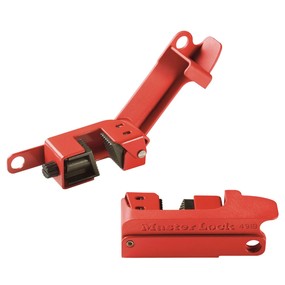NMC Lockout Tagout - Circuit Breakers - Training: Learn about a variety of circuit breaker lockout devices (single pole, two pole, panel lockout, universal multi-pole).
Circuit Breaker Lockout Device by NMC: Learn how to install a single pole circuit breaker lockout device.
How to Install a Universal Multi-pole Breaker Lockout Device by Brady: Learn how to install a universal multi-pole circuit breaker lockout device.
How To Install A Snap On Breaker Lockout Device by Brady: Learn how to install a snap on circuit breaker lockout device.
How to Use a Clamp On Breaker Lockout Device by Brady: Learn how to install a clamp on circuit breaker lockout device.
Using Clamp on Breaker Cleats by Brady: Lockout cleats are used to lockout breakers with long sliding switch throws. Learn how to use a cleat with a clamp on breaker lockout device.
How To Install A Breaker Blocker Lockout Device by Brady: Breaker blocker devices are ideal for oversized and irregularly shaped switches. Learn how to install and use a breaker blocker kit.
How To Install A Mini Circuit Breaker Lockout Device: Use pin devices for single-pole mini circuit breakers and use universal multi-pole devices for mini circuit breakers with a tie bar.
TAGLOCK Circuit Breaker Securing Devices from Brady: Simultaneously tag and secure circuit breakers without having to attach any locks. Following a comprehensive lockout/tagout program, Brady’s innovative TAGLOCK™ devices can be secured to circuit breakers solely with high-strength non-releasable nylon cable ties.
How to use Panduit Circuit Breaker Lockout Devices: Watch the quick installation of a screw-on circuit breaker lockout.
How to use Panduit Large Circuit Breaker Lockout Devices: Learn how to install a molded case circuit breaker lockout for use with a variety of three phase circuit breakers.
Panduit PowerLOK™ Circuit Breaker Lockout: A common problem is that circuit breaker lockout devices cannot hold much weight. If many locks are attached to one device, the device may slip off the breaker when the workers are not around. Panduit PowerLOK was designed to be sturdy enough to stay.
How to Install a Brady Safelex LOTO Device: Learn how to use a cable lockout device to securely lockout multiple electrical boxes.






















